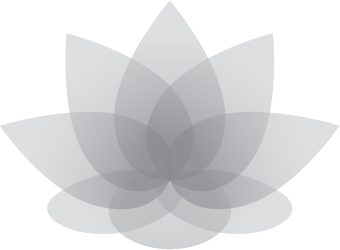
Полная версия
Happiness Becomes You
For example, if we are struggling to meet our basic physical and safety needs, we’re likely to experience the conditions of Hell, Hunger, Anger, and Animality. And when our psychological needs are met, we achieve Tranquility and Heaven.
In Maslow’s pyramid, the next level is esteem (accomplishment, freedom, and self-confidence), which corresponds to Learning and Realization; and finally, there is the level of self-actualization (fulfillment of potential, discovery of purpose, and clarity of perception), which shares elements of the life conditions of Bodhisattva and Buddhahood.
When we seek to self-actualize—when we aspire to manifest the states of Bodhisattva and Buddhahood—we are changed for the better. I spoke about this often while touring Japan in the late 1980s, explaining that, thanks to my Buddhist practice, I felt like a different person had emerged from within me, my true self, with a strong sense of purpose and self-awareness.
Despite the similarities between the Ten Worlds and Maslow’s hierarchy, there is a key difference. Unlike the stages that one must satisfy in order to move on to the next level on Maslow’s pyramid, the optimistic message of Buddhism is that each of the Ten Worlds contains the potential of all the other life conditions within itself. In other words, we can move directly from one condition to any other, without having to experience an intermediate condition.
This concept is liberating because it tells us that even if we are experiencing the condition of Hell, we have the potential to instantly manifest any of the higher states, even Buddhahood.
For example, people who have survived a natural disaster report experiencing profound insights about the interrelatedness of all living things. They often feel more compassionate, and at one with the universe.
This awareness of our potential to elevate ourselves out of the lowest depths of suffering to the highest state of human existence is life changing. Armed with this knowledge, we see that there is a positive quality in every condition, so we don’t need to fear any state of life. When we wake up to this reality, that any condition we may be experiencing possesses the potential for all other states of being, we can find the light of hope no matter what our circumstances are.
This understanding is crucial, because without hope, anything can become a source of despair. With hope, anything can become a source of joy.
We can also be confident that we can use any of the lower conditions of life as fuel to achieve the higher ones. This is our human superpower, the ability to “change poison into medicine.”
Thanks to my Buddhist practice, the empowering process of changing poison into medicine—transforming destructive negativity into creative positivity—has become the hope-filled theme of my life, which we’ll explore more in chapter five.
In the meantime, know that whenever you feel your life condition diving down into the lower worlds, you can lift yourself up. Sometimes you can do it through relatively simple efforts. Focusing your mind, doing yoga, running, swimming, working out, practicing breathing exercises, taking a walk, “shaking it off,” or, as many of us learned in kindergarten, stopping for a time-out or nap can sometimes work wonders. If these methods aren’t effective at raising your state of mind, you can explore other ways, such as prayer, chanting, meditation, or study. Choose whatever path works best for you.
In my case, until I was thirty-four, nothing I tried seemed to make a lasting improvement in my life condition. Nothing helped me to lift myself out of the lower worlds. I was stuck in negative cycles, silently suffering, unsure how I could ever make my dreams come true.
Then, I began to chant. Buddhism taught me how to access a direct path upward in my life condition, a spiritual express lane, so to speak, by chanting Nam-myoho-renge-kyo.
I think most people who know something about me have probably heard that I study and practice Buddhism and that I chant Nam-myoho-renge-kyo. I’ll bet fewer people know how chanting actually works.
Now that we’ve explored the Ten Worlds together, we’ll look at what the words—or sounds—Nam-myoho-renge-kyo mean, both literally and to me personally. I’d like to share with you some of the wondrous ways in which chanting has helped me to become happy and strong, how it lifted my life condition—and how it can do the same for you.
HIGHLIGHTS OF POSITIVE AND NEGATIVE ASPECTS IN EACH OF THE TEN WORLDS
1. HELL
Positive: Personal experiences of deep suffering can lead us to the desire to help others find their way out of their own suffering.
Negative: Hopeless despair; the inability to see oneself and others clearly; self-destructive tendencies.
•
2. HUNGER
Positive: Aiming to achieve goals; yearning to have more.
Negative: Greed; hedonism; insatiable desires.
•
3. ANIMALITY
Positive: Healthy instincts to survive and to protect and nurture life.
Negative: Acting only from instinct; threatening the weak and fearing the strong.
•
4. ANGER
Positive: Righteous passion to fight injustice; creative force for change.
Negative: Egotistic self-righteousness; destructive competitiveness; conflict.
5. TRANQUILITY
Positive: Neutral state of peacefulness; ability to act with humane reason.
Negative: State of passive inactivity; unwillingness to tackle problems; laziness.
•
6. HEAVEN
Positive: Sense of pleasure and happiness; heightened awareness; feelings of appreciation for being alive.
Negative: Short-lived elation that is typically self-oriented; wish for fleeting gratification to repeat can lead to excess.
•
7. LEARNING
Positive: Striving for self-improvement by studying new concepts through others’ teachings.
Negative: Tendency to become self-centered; dismissive attitude toward others with less experience or knowledge.
•
8. REALIZATION
Positive: Gaining wisdom and insight through one’s own learning and personal observation of the world.
Negative: Lacking a broad view of life due to self-absorption; feelings of superiority over others.
9. BODHISATTVA
This word contains bodhi, or “enlightenment,” and sattva, or “living beings”—meaning one who seeks enlightenment for oneself and others.
Positive: Compassion; acting selflessly for others without expectation of reward.
Negative: Neglecting one’s own life; feeling contempt for those one tries to help.
•
10. BUDDHAHOOD
This word indicates the state of enlightenment to the ultimate reality of the universe and all workings of life.
Positive: Boundless wisdom, courage, and compassion; a grand life force that illuminates the positive aspects of each of the other nine worlds. Buddhahood is the only life condition that has no negative aspects.

Конец ознакомительного фрагмента.
Текст предоставлен ООО «ЛитРес».
Прочитайте эту книгу целиком, купив полную легальную версию на ЛитРес.
Безопасно оплатить книгу можно банковской картой Visa, MasterCard, Maestro, со счета мобильного телефона, с платежного терминала, в салоне МТС или Связной, через PayPal, WebMoney, Яндекс.Деньги, QIWI Кошелек, бонусными картами или другим удобным Вам способом.



